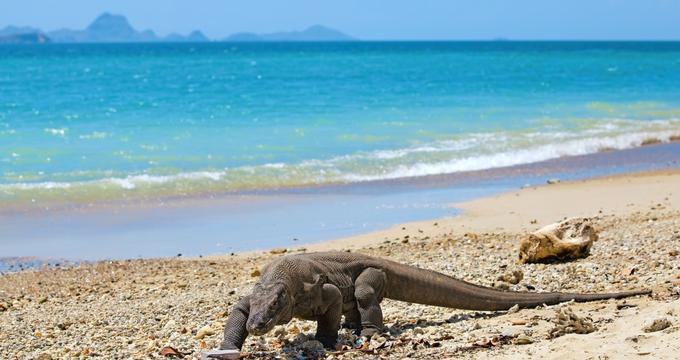One of the most biodiverse places on Earth, Komodo National Park in Indonesia offers a once-in-a-lifetime opportunity to explore wild island landscapes, vibrant coral reefs, and the legendary Komodo dragon in its natural habitat.
Recommended for
Wildlife Enthusiasts: See the iconic Komodo dragon and other rare terrestrial and marine species.
Divers & Snorkelers: Discover some of the world’s richest coral reefs and marine life.
Cultural Travelers: Learn about the lives of the Ata Modo people and nomadic fishermen communities.
What to Expect
- Island Scenery: Komodo, Rinca, and Padar islands offer rugged hills, sweeping vistas, and pink sand beaches.
- Wildlife Encounters: Spot Komodo dragons, Timor deer, orange-footed scrub fowl, and sea turtles.
- Marine Biodiversity: Dive into waters teeming with manta rays, sharks, coral reefs, dolphins, and dugongs.
Park Overview
- Location: East Nusa Tenggara, Indonesia, between the islands of Flores and Sumbawa.
- Size: 1,817 km² of protected land and sea (with proposals to expand to 2,321 km²).
- Established: 1980, initially for the conservation of the Komodo dragon.
- UNESCO Designation: Man and Biosphere Reserve and World Heritage Site (1986).
Flora & Fauna
- Terrestrial Species: Komodo dragons, Timor deer, wild boars, and orange-footed scrub fowl.
- Marine Life: Over 1,000 fish species, 260 coral species, 70 sponge species, 14 whale species, manta rays, sea turtles, and sharks.
People & Culture
- Inhabitants: Communities of fishermen from South Sulawesi, South Flores, Manggarai, and Bima.
- Ethnic Groups: The Bugis and Suku Bajau people, historically nomadic seafarers.
- Ata Modo People: Descendants of Komodo's original inhabitants; their culture and language are slowly integrating with newer communities.
Conservation
- Original Purpose: To protect the Komodo dragon, first described in 1911 by J.K.H. Van Steyn.
- Expanded Mission: The park now protects entire ecosystems, both terrestrial and marine.
Plan Your Trip


